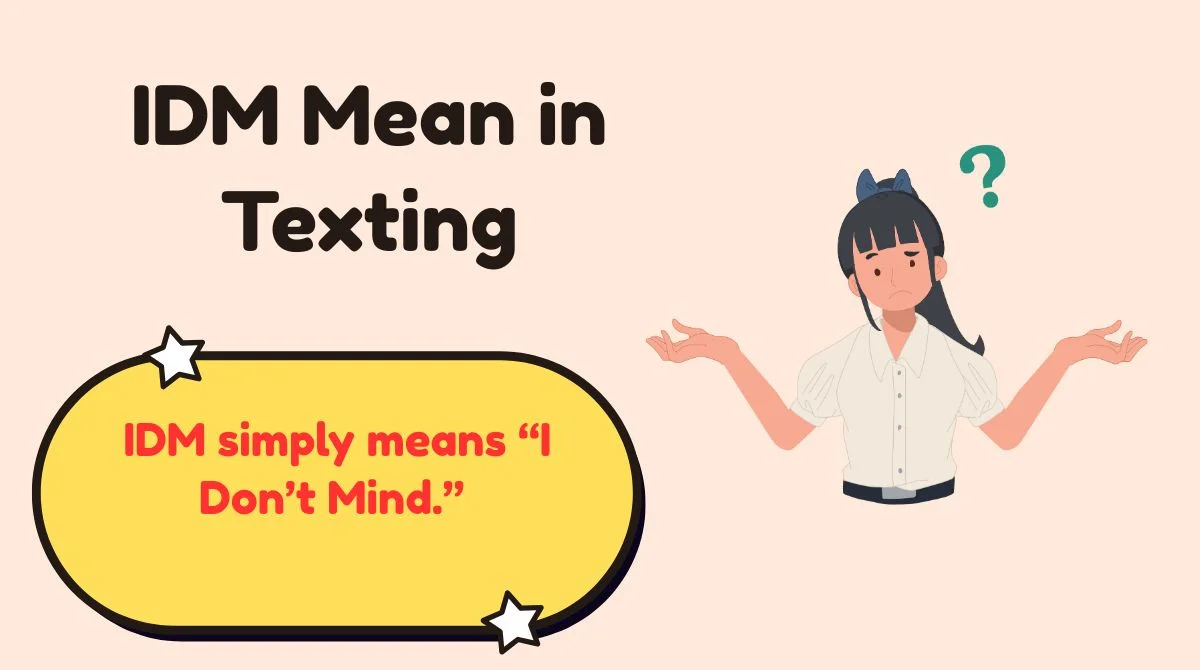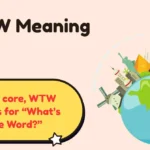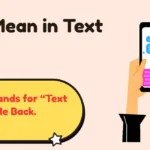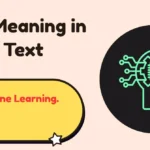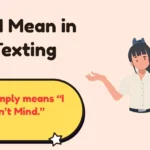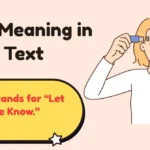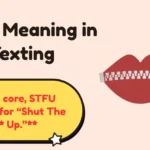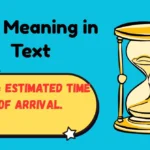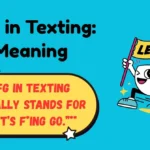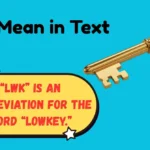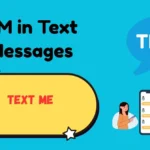Texting today is full of shortcuts, acronyms, and slang that make conversations fast and snappy. From LOL to BRB to LMK, these abbreviations save time but can sometimes confuse people who aren’t up to speed. One of the most common acronyms you might see is IDM.
So, what does IDM mean in texting? In most cases, IDM simply means “I Don’t Mind.” But like many acronyms, the tone and context can change its meaning dramatically.
In this guide, we’ll break down exactly what IDM means, when to use it (and when to avoid it), how people interpret it, and plenty of real-world examples to help you master this little acronym without miscommunication.
IDM Meaning in Texting: A Simple Breakdown
At its core, IDM = I Don’t Mind.
It’s a quick way of saying you’re fine with any choice being offered. Instead of typing out the full phrase, someone just drops “IDM” into the chat.
For example:
- Friend: “Do you want pizza or burgers tonight?”
- You: “IDM.”
That one reply communicates flexibility, politeness, and an easy-going attitude.
Why People Use IDM
- Saves time: Three letters instead of three words.
- Shows flexibility: Indicates you’re okay with any outcome.
- Fits casual tone: Works in friendly, relaxed conversations.
Fun fact: Acronyms like IDM are part of a much bigger trend in digital communication where brevity and speed matter more than spelling and grammar.
Examples of IDM in Real Conversations
Let’s look at IDM in action. Here are some real-world texting scenarios to show how it fits naturally into conversations:
| Situation | Text Message | Response with IDM |
|---|---|---|
| Friends choosing food | “Pizza or tacos tonight?” | “IDM, both sound great.” |
| Group chat planning | “Beach or park tomorrow?” | “IDM, whatever works for everyone.” |
| Dating/casual talk | “Do you want to meet at 6 or 7?” | “IDM, I’m flexible.” |
| Work chat (informal) | “Zoom or Teams for the meeting?” | “IDM, whichever you prefer.” |
Notice how IDM adapts across settings, from playful chats to semi-professional quick replies.
When to Use or Avoid IDM
IDM isn’t always the right choice. Let’s split it into ✅ appropriate uses and ❌ situations where you should avoid it.
✅ Best Times to Use IDM
- Casual conversations with friends: Quick decisions like food, hangouts, or movies.
- Group planning: Keeps things smooth when you’re okay with majority choice.
- Low-stakes decisions: Where either option works fine.
❌ When to Avoid IDM
- Formal communication: Emails, client messages, or job interviews.
- Serious conversations: Can sound cold or dismissive.
- When clarity matters: If someone needs a strong opinion, “IDM” can frustrate them.
Pro tip: When in doubt, spell out your response in full instead of relying on IDM. It feels more thoughtful.
Tone & Interpretation: How IDM Can Be Read
Texting leaves room for tone misinterpretation. IDM is one of those acronyms that can land differently depending on context and the reader’s mood.
Neutral / Friendly
-
“IDM, whatever you feel like ordering.”
This comes off polite and cooperative.
Detached / Indifferent
-
“IDM.”
Short, standalone replies can feel like you don’t care.
Passive-Aggressive
-
“Fine, IDM.”
When paired with certain wording, it can carry a dismissive edge.
Tip to avoid confusion: Add a smiley emoji or extra words if you want to sound warm. Example: “IDM 😊 both sound good!”
Alternatives to IDM – Polished Options for Every Context
Sometimes, IDM feels too clipped. Here are alternatives broken down by situation:
Formal & Polite Alternatives
- “I don’t have a preference.”
- “Either option works for me.”
- “I’m fine with whichever you choose.”
Friendly & Cooperative Alternatives
- “I’m good with anything.”
- “Whatever works best for you.”
- “Totally up to you!”
Relaxed or Informal Alternatives
- “Cool with me.”
- “All good.”
- “No prob.”
- “Whichever’s easiest.”
Case Study:
Emma was coordinating dinner plans with her coworkers. Instead of texting “IDM” (which might have seemed too casual), she wrote, “Either works for me—happy with whatever the team prefers.” The response felt cooperative and professional while still being brief.
12 Smart Ways to Say IDM (With Example Texts)
Here are 12 refined alternatives to IDM, with short examples showing how they can be used:
- “I don’t have a preference.”
- “Should we go at 5 or 6?” → “I don’t have a preference, both are fine.”
- “Up to you.”
- “Want Thai or Italian?” → “Up to you!”
- “I’m flexible.”
- “Zoom or phone call?” → “I’m flexible with either.”
- “I’m good with anything.”
- “Should we watch Netflix or Hulu?” → “I’m good with anything.”
- “Either one works for me.”
- “Tea or coffee?” → “Either one works for me.”
- “Whatever’s easiest for you.”
- “Should we meet downtown or at your place?” → “Whatever’s easiest for you.”
- “No preference.”
- “Morning or afternoon?” → “No preference.”
- “I’ll go with whatever you choose.”
- “Movie A or Movie B?” → “I’ll go with whatever you choose.”
- “Both sound good.”
- “Pasta or pizza?” → “Both sound good.”
- “Works for me.”
- “Shall we book for 7?” → “Works for me.”
- “I don’t mind either way.”
- “Should we leave today or tomorrow?” → “I don’t mind either way.”
- “Happy with whatever.”
- “Do you want coffee or juice?” → “Happy with whatever.”
Choosing the Right Alternative: A Quick Cheat Sheet
To make things easier, here’s a cheat sheet for picking the right phrase depending on who you’re texting:
| Context | Best Alternatives | Example |
|---|---|---|
| 📱 Casual texts | “Up to you” / “I’m good with anything” | “Movie or game night?” → “Up to you!” |
| 💼 Professional settings | “Either option works for me” / “I don’t have a preference” | “Zoom or Teams?” → “Either option works for me.” |
| 👥 Friends & group chats | “Cool with me” / “No prob” | “Pizza or tacos?” → “Cool with me.” |
IDM vs. Similar Acronyms: Don’t Mix Them Up
It’s easy to confuse IDM with other common texting acronyms. Here’s a quick comparison:
| Acronym | Meaning | Example Use |
|---|---|---|
| IDM | I Don’t Mind | “Want to meet at 6 or 7?” → “IDM.” |
| IDK | I Don’t Know | “Where’s the meeting?” → “IDK.” |
| LMK | Let Me Know | “Tell me when you’re ready.” → “LMK.” |
| IDC | I Don’t Care | “Want coffee?” → “IDC.” |
Note: IDC sounds more dismissive than IDM. People often confuse them, but the emotional impact is very different.
Final Thoughts: Using IDM the Right Way
So, what does IDM mean in texting? It stands for I Don’t Mind, and it’s one of those handy acronyms that make digital communication smoother.
The key is knowing when to use it and when to avoid it. In casual conversations, it’s perfect for showing flexibility. In formal or sensitive contexts, it’s better to spell things out.
Remember: words in texting lack tone and body language. If you want to avoid misunderstandings, use alternatives like “I don’t have a preference” or add a friendly emoji.
FAQs About IDM in Texting
What does IDM mean in texting slang?
IDM usually means “I Don’t Mind” and shows you’re okay with either option being discussed.
Is IDM the same as IDC?
No. IDM means you’re flexible, while IDC means you don’t care at all, which can sound rude.
Can I use IDM in professional emails?
Not recommended. It’s better to write it out as “I don’t have a preference” in formal contexts.
Does IDM ever mean something else?
Rarely. In some online communities, IDM can also stand for Intelligent Dance Music, but in texting it almost always means I Don’t Mind.
How do I make IDM sound less cold?
Add extra words or emojis: “IDM 😊 anything works for me.” That softens the tone.
